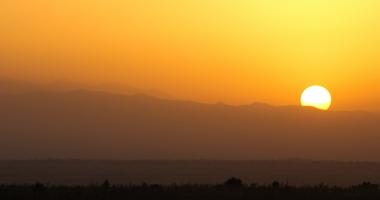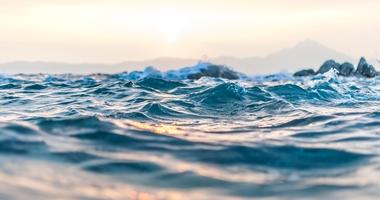
How the Climate Crisis is Impacting Puerto Rico
Join us for our Power Up Training: From Acts to Action in April and learn how new climate laws can help you.
“We need to stop talking about climate change in future tense. It’s already here.” –Carlos Ramos-Scharrón, ecologist and Puerto Rico native.
Rising sea levels, stronger and more frequent hurricanes, and increased flooding are just some of the ways in which the climate crisis is impacting the lives of Puerto Ricans. As Hurricanes Maria and Fiona and the massive power grid failure underscore, the Island of Enchantment has become one of the most climate-impacted places in the world.
The way climate change is affecting Puerto Rico is a painful reminder that small islands are experiencing extremely disproportionate climate impacts. Look at it this way: Puerto Rico accounts for 0.04% of the world’s population, and practically 0% of the world’s emissions, where its governing nation-state (the United States of America) accounts for 4.2% of the world’s population and nearly 12% of the world’s emissions. There's a term for this: environmental injustice. Or to put it another way, the little guys are always left to pay the price for wealthier nations’ lifestyles.
Hurricane Havoc
Temperatures in Puerto Rico have risen approximately 2 degrees Fahrenheit since 1950. When it comes to the climate crisis, every degree matters, especially when lives are at stake. Puerto Rico’s location in the Caribbean makes it especially susceptible to extreme weather events like hurricanes. The hotter it gets, the more often and more intense these hurricanes will become. Considering how destructive recent storms have been, a future with even more and even stronger hurricanes is hard to imagine.
Why? Let’s rewind back to 2017, when the devastating Hurricane Maria struck Puerto Rico. It certainly wasn’t the island's first hurricane, but it was the one that changed everything. The one where the role of climate change became apparent to everyone.
At the time, 2017 was the third-hottest year since 1880, only surpassed by 2015 and 2016. (It remains in the top five hottest years today.)
With all this in mind, it shouldn’t be surprising that a 2019 study found that “a Maria-like storm was about ‘five times more likely’ because of climate change.”
The island had never seen anything like the apocalyptic Category 4 storm, where 155 mph winds took almost 3,000 lives and left residents without power for up to 11 months. Then there was the precipitation, with more rain from Maria striking the island than any other storm since 1956. Together, the wind, rain, and storm surge did unspeakable damage to the island’s resources, especially its power grid, but the storm could never dampen the spirit of Puerto Rico.
The Dual Definition of Power
After a storm like Maria, the impacts are going to be long-lasting. Five years later, and Puerto Rico didn’t have enough time or aid to be ready for Hurricane Fiona. And then Ian. Between the storm surge, flooding, and high winds, Puerto Rico hasn’t had time to recover, and it all comes down to power. In both electric and social forms.
Puerto Rico’s electricity grid supplies energy to the island through above-ground power lines that run on fossil fuels, which underwent significant damage from each hurricane. The other side of the coin is that after Maria, the Puerto Rican government privatized the power sector, perpetuating an unjust and unreliable energy system.
How to Help
The climate crisis isn’t some impending doom, looming over us. It’s already here, and it’ll only get worse until we take bold action, and soon. The lives of Puerto Ricans and other islanders across the globe are at risk due to global dependence on fossil fuels.
Approximately 4% of the island’s population had to flee in the aftermath of Hurricane Maria. Today, Puerto Ricans must create their own solutions in order to recover and prepare for future hurricanes, because aid and resources have been lacking.
Right now, one of the best ways for Puerto Rico to increase resiliency against the climate crisis is through a more reliable energy grid – one powered by clean energy. Ending the world’s addiction to fossil fuels is a critical part of dramatically reducing harmful human impact on the atmosphere and our planet’s ecosystems.
At Climate Reality, we create awareness of the harmful impacts of fossil fuels and how clean energy can help build a better future for us all. You can be a part of the global community working to raise awareness of the crisis and fighting for just climate solutions for communities like Puerto Rico and beyond.
Join our next training, Power Up: From Acts to Action. Let’s leverage the IRA and Infrastructure Act for climate action now. Become a part of the Climate Realty Leader community fighting the climate crisis. Learn how these new climate laws can bring clean, reliable energy and environmental justice to communities like Puerto Rico across the country. Register today to make a difference starting April 6!




